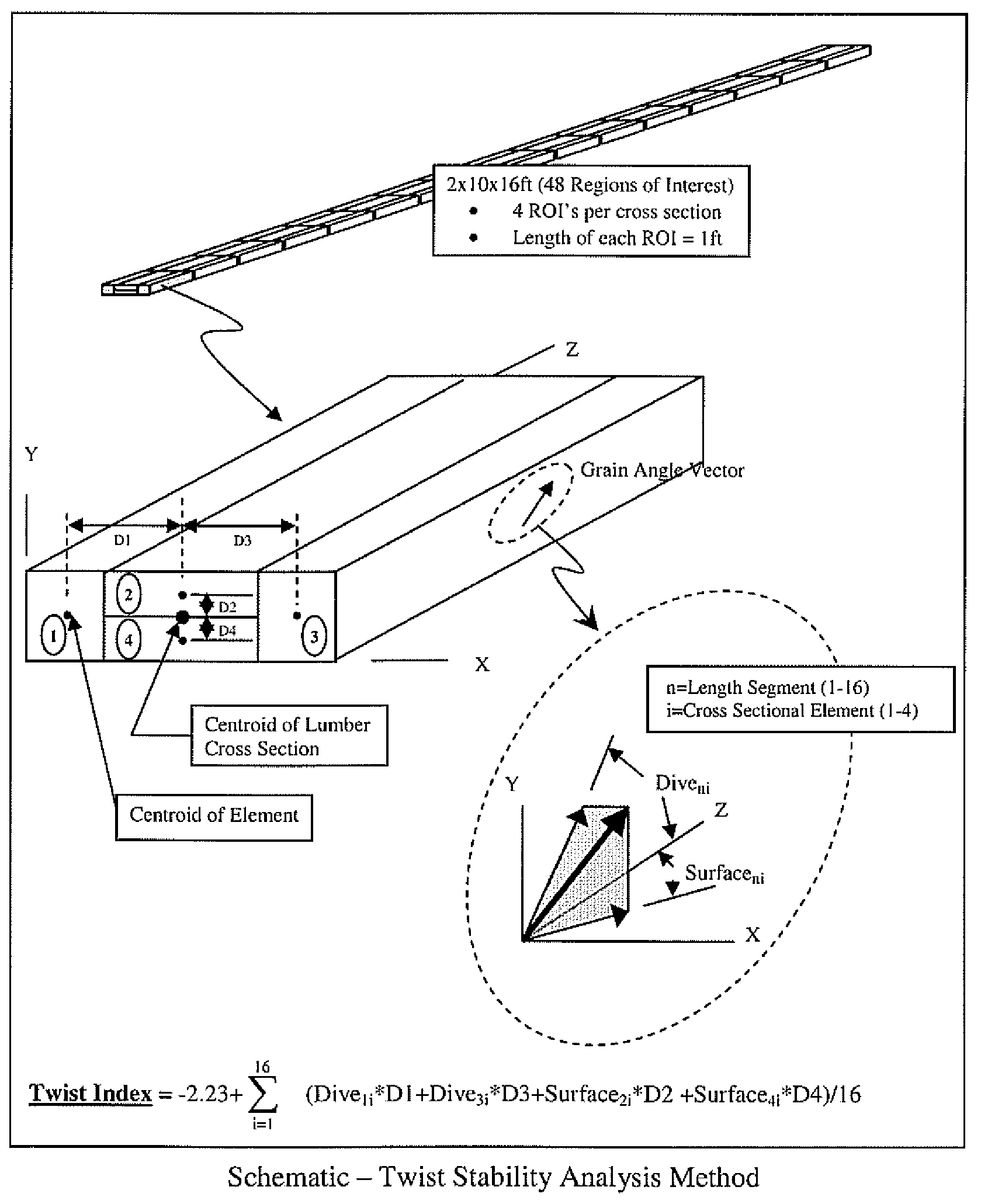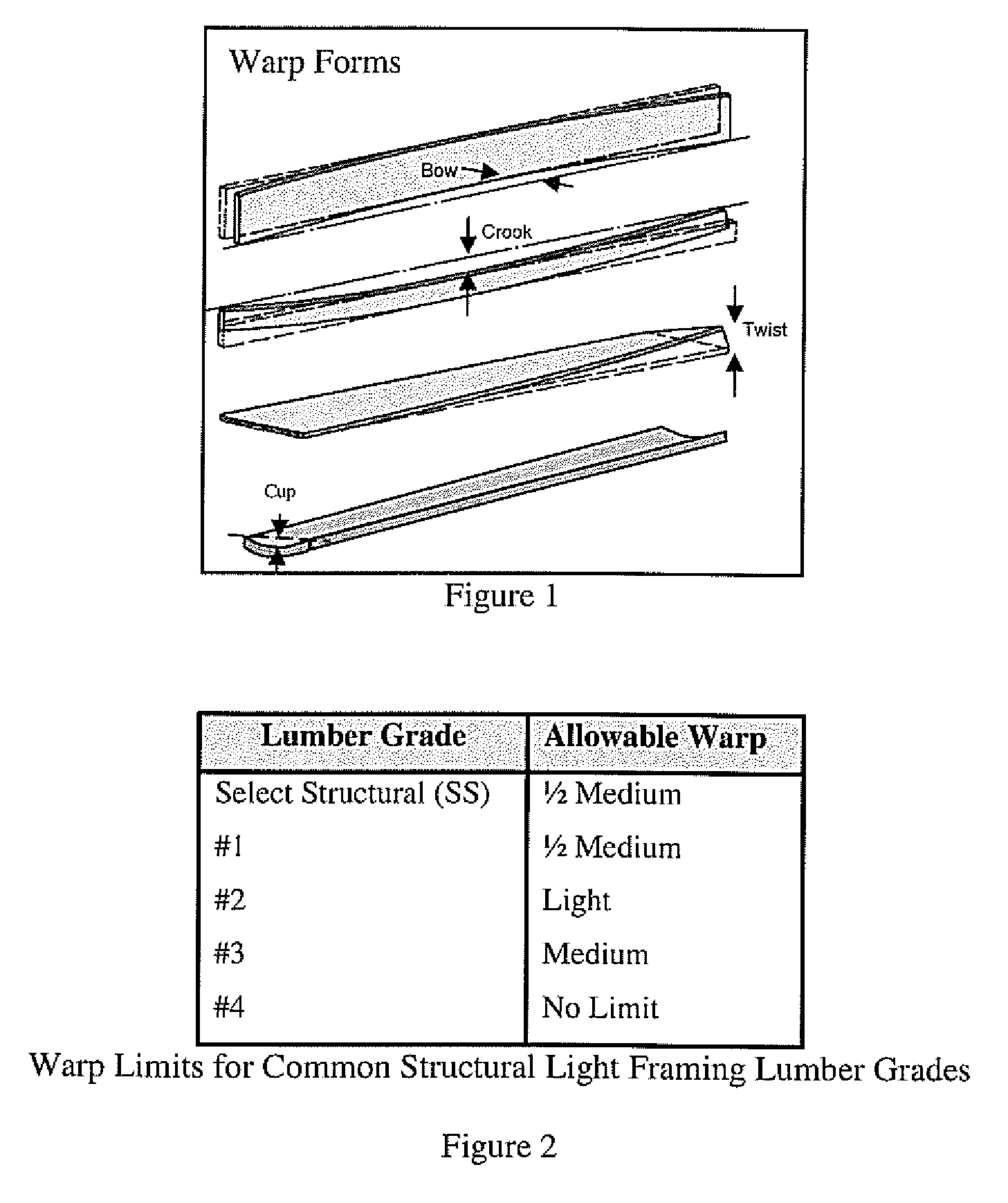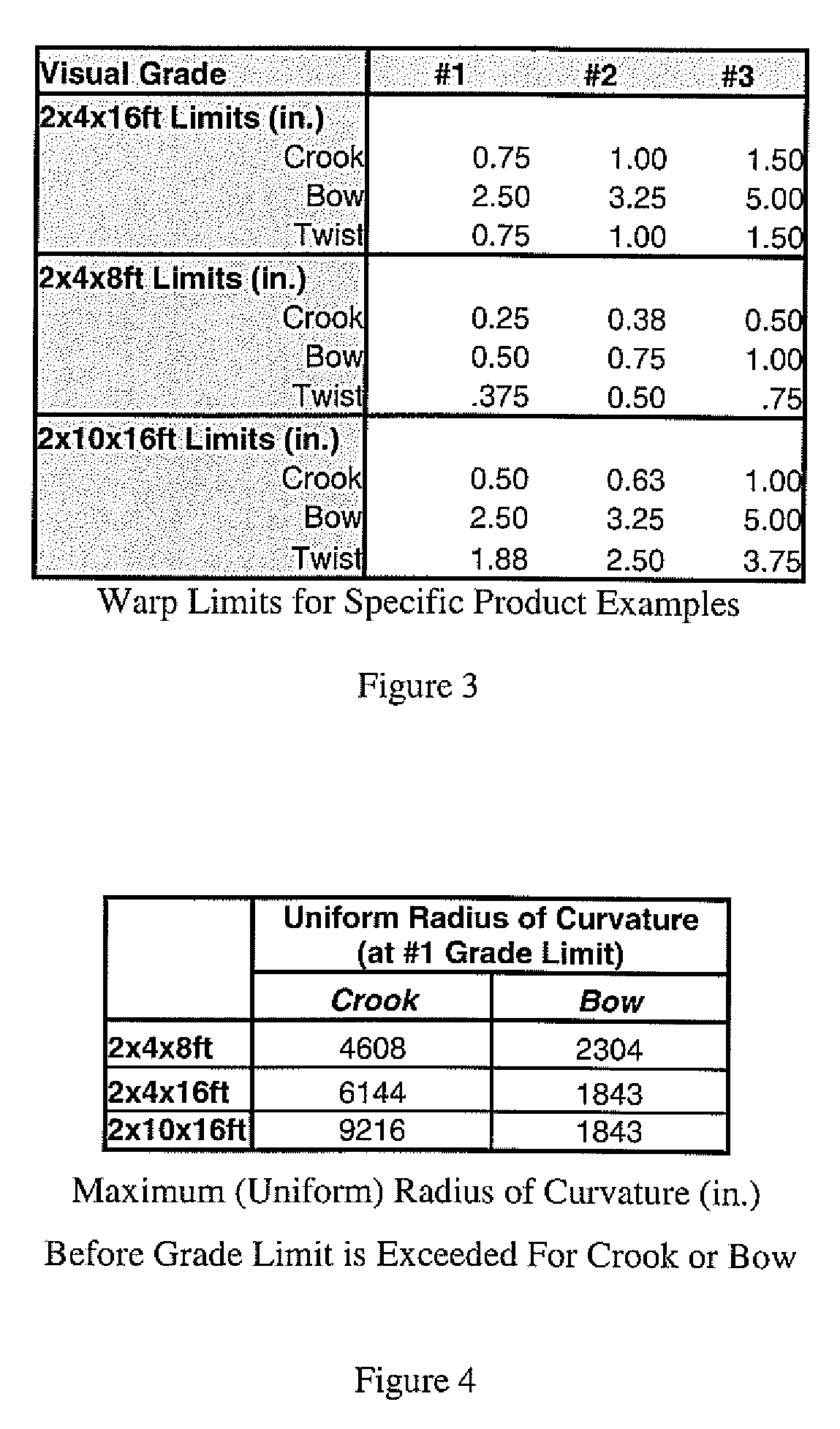Warp Stable Wood Product And Methods For Detecting The Same
a stable wood and wood technology, applied in the direction of analysing solids using sonic/ultrasonic/infrasonic waves, instruments, manufacturing tools, etc., can solve the problems of inability to detect the same, the straightness of the piece of lumber is changed, and the warp is prone to increas
- Summary
- Abstract
- Description
- Claims
- Application Information
AI Technical Summary
Problems solved by technology
Method used
Image
Examples
example # 1
EXAMPLE #1
Uniformity of Microfibril Angle as a Basis for Warp Stability
[0044]It is well known that lengthwise shrinkage is highly correlated to microfibril angle. Cave (1976)4 developed an empirical model for this relationship. FIG. 6 shows the typical relationship for loblolly pine (pinus taeda) fitted to the form of the Cave model. Notice that this is a highly nonlinear relationship. The slope of the curve is near zero below 35 degree MFA; and beyond that threshold, the slope of this curve increases exponentially. Therefore, the tolerance to MFA gradients is highly dependent on the average MFA of the piece. When the average MFA of a piece of lumber is small, its MFA gradients can be very large before the piece is prone to warp. On the other hand, if the average MFA is large, small gradients can render the piece highly warp prone.
[0045]Using the relationship shown in FIG. 6 and the concepts described previously, limits can be set for allowable microfibril angle (MFA) gradients acro...
example # 2
EXAMPLE #2
Use of Acoustic Symmetry to Infer Warp Stability
[0047]It is well known that acoustic velocity (speed at which sound travels through wood) is highly correlated to the average microfibril angle of wood. FIG. 8 shows the typical relationship between lengthwise shrinkage and acoustic velocity for loblolly pine (pinus taeda). As expected, the shape of this curve resembles the MFA-LSRC relationship shown in FIG. 6.
[0048]Using the relationship shown in FIG. 8 and the concepts described previously, limits can be set for allowable acoustic velocity gradients across the width or through the thickness of a piece of lumber. If these limits are not exceeded, the piece can be considered warp stable. FIG. 9 shows an example of such limits for the case where a manufacturer seeks to ensure #1 grade crook limits are retained after 10% additional moisture loss. This example is based on the criteria that shrinkage coefficients must not differ by more than 4.0×10−5 in / in / % MC from face-to-face...
example # 3
EXAMPLE #3
Use of Light Scatter Symmetry to Infer Warp Stability
[0050]It is known that when a spot of light illuminates an unfinished wooden surface, the wood fibers distort the pattern of reflected light in such a way that the reflected shape looks different than the incident shape. The degree to which the light spot is distorted by the wood is an indicator of the lengthwise shrinkage properties of the wood at that location (Nystrom et al., 1999)5. This “tracheid effect” measurement (referred to as “T1 measurement”) is taught in U.S. Pat. No. 3,976,384. 5Nystrom, J.; Hagman, O.; Methods for detecting compression wood in green and dry conditions., Proceedings of the SPIE—The International Society for Optical Engineering (1999) vol. 3826, p. 287-94.
[0051]An experiment was conducted to verify that a T1 measurement can be used to identify pieces of lumber that are composed of matter having shrinkage gradients exceeding acceptable limits for warp stability such as those defined in FIG. 5...
PUM
 Login to View More
Login to View More Abstract
Description
Claims
Application Information
 Login to View More
Login to View More - R&D
- Intellectual Property
- Life Sciences
- Materials
- Tech Scout
- Unparalleled Data Quality
- Higher Quality Content
- 60% Fewer Hallucinations
Browse by: Latest US Patents, China's latest patents, Technical Efficacy Thesaurus, Application Domain, Technology Topic, Popular Technical Reports.
© 2025 PatSnap. All rights reserved.Legal|Privacy policy|Modern Slavery Act Transparency Statement|Sitemap|About US| Contact US: help@patsnap.com



